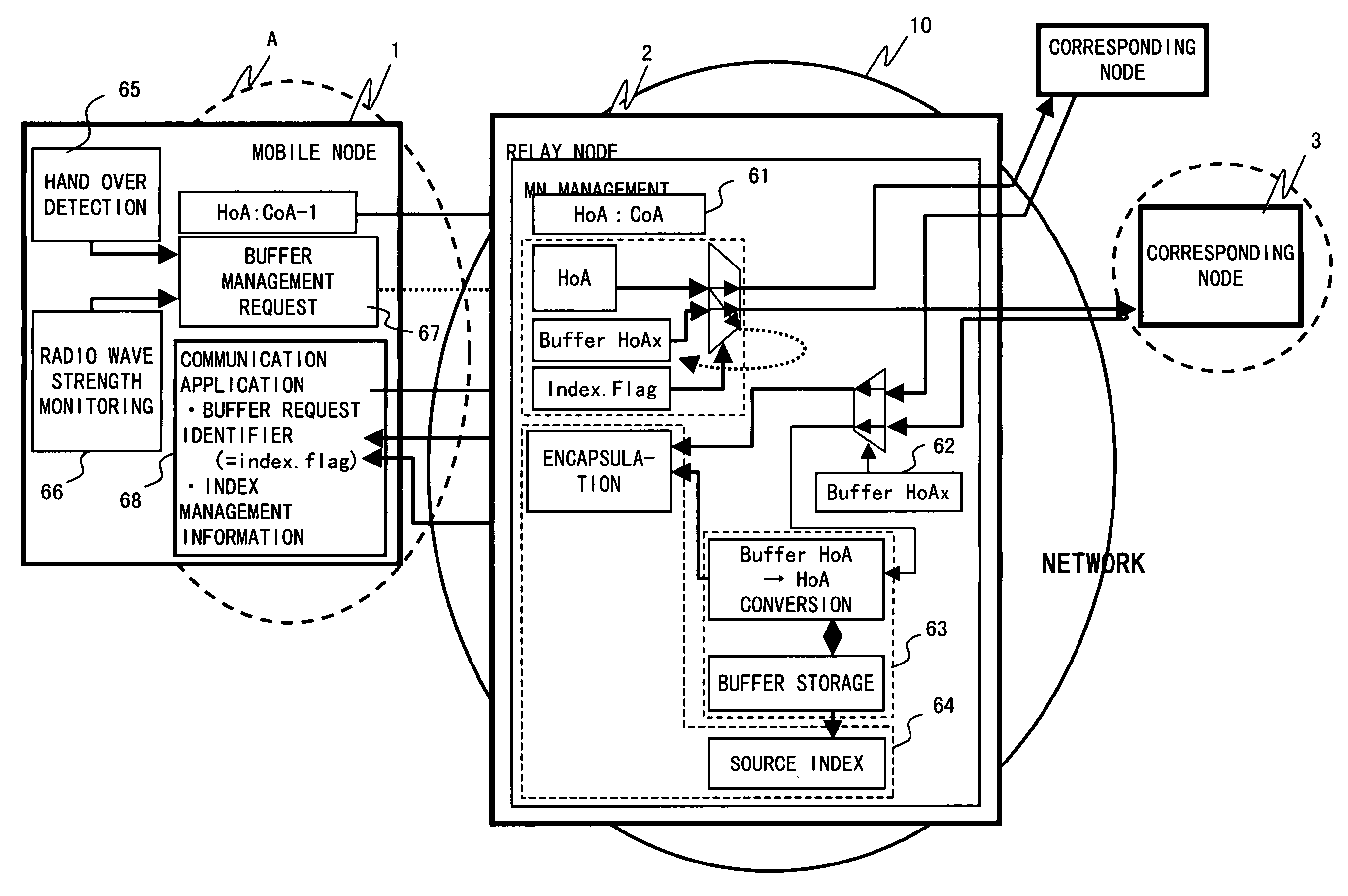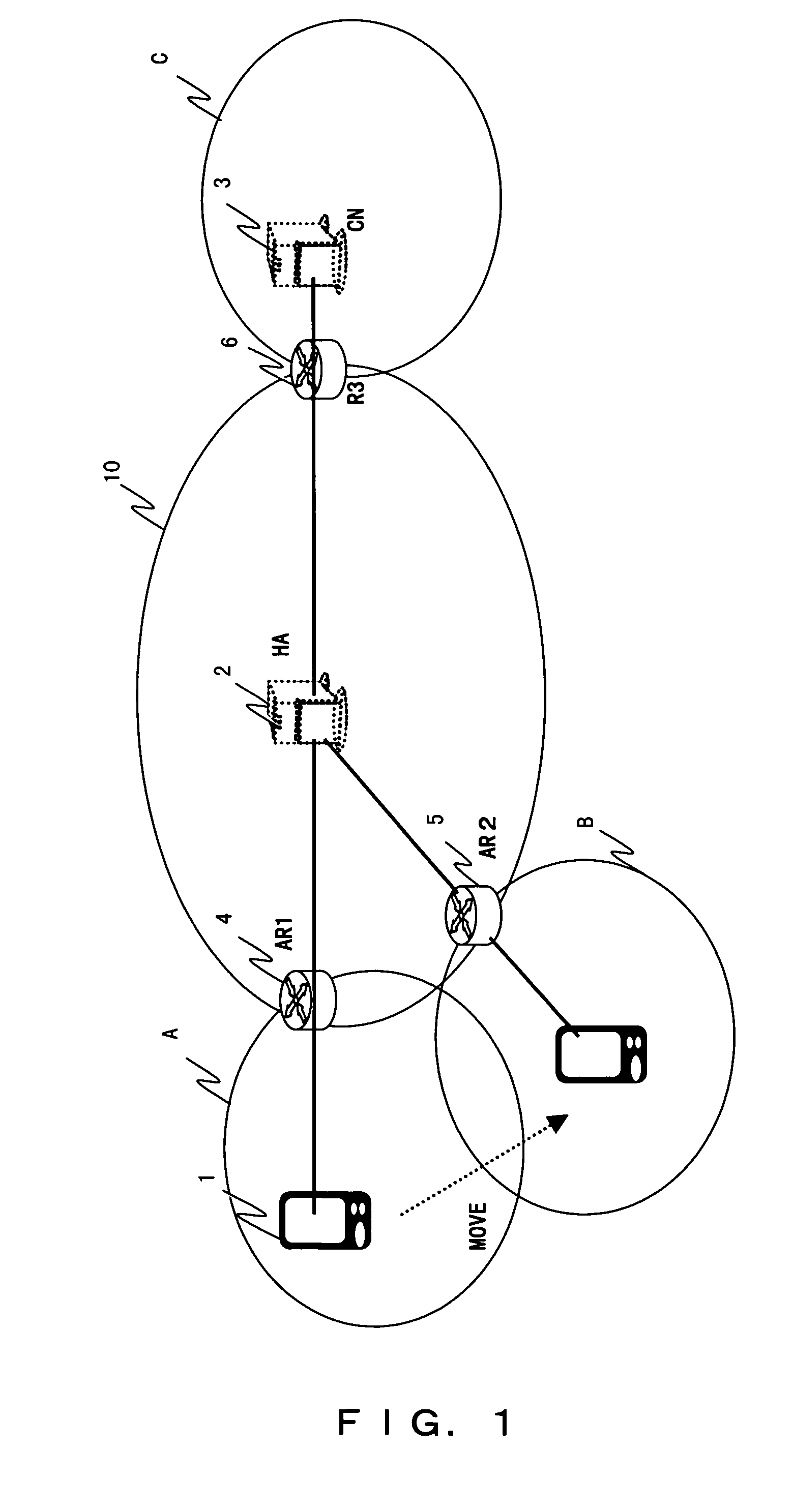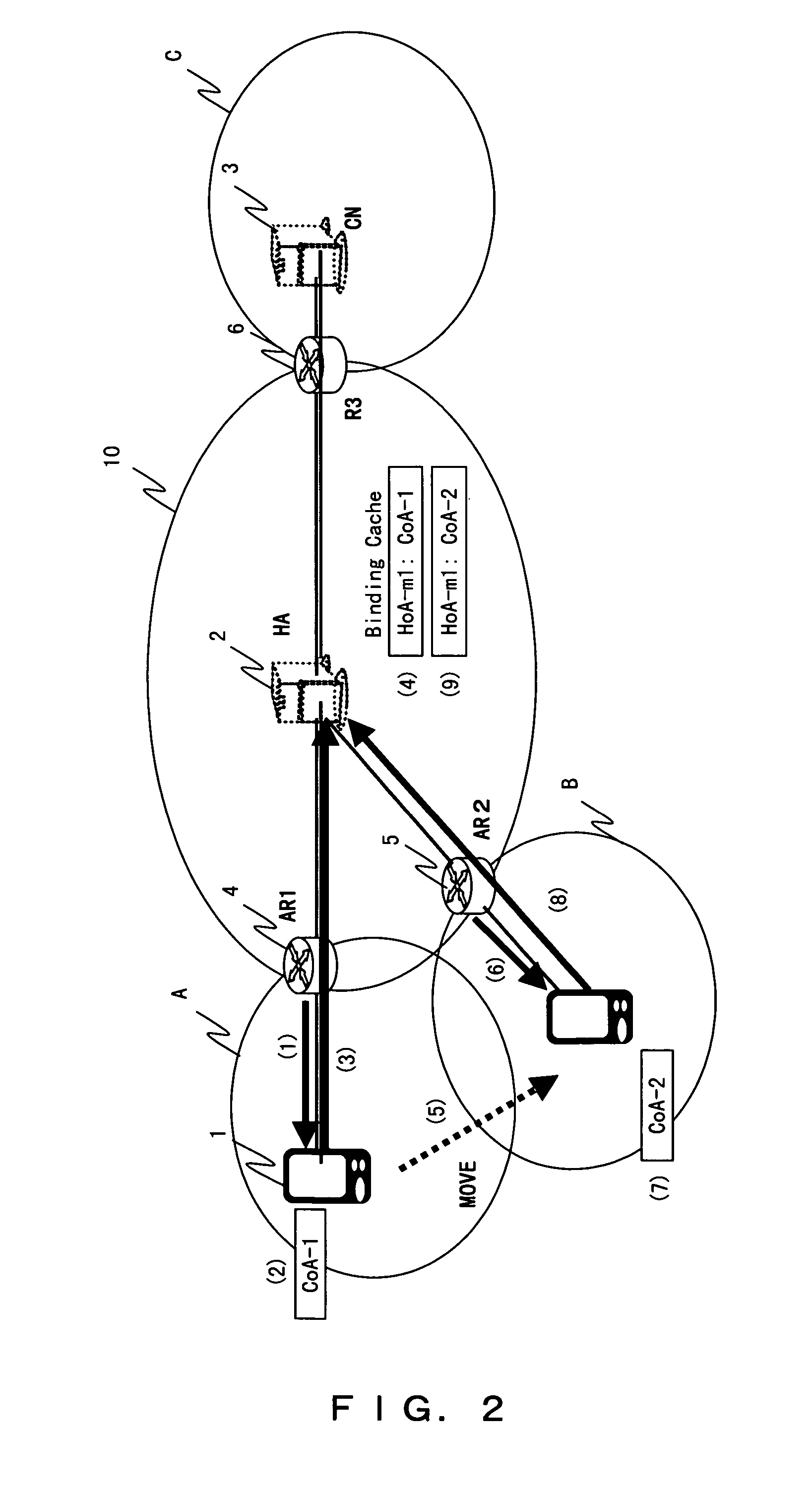Data transfer system and data transfer method
a data transfer system and data transfer technology, applied in the field of data transfer methods, can solve the problems of packet loss, reduced throughput of the home agent or the mobile node of the receiving node, and reduced network efficiency, so as to prevent the degradation of radio wave strength or the like, and reduce the load on the mobile node
- Summary
- Abstract
- Description
- Claims
- Application Information
AI Technical Summary
Benefits of technology
Problems solved by technology
Method used
Image
Examples
first embodiment
[0103]FIG. 9 is a diagram explaining a method in which a home agent of a relay node transmits a buffered packet to a mobile node by a request from the mobile node. In the same way as FIG. 1, a home agent (a mobile-supporting node, HA) 2 which is a relay node, access routers 4 and 5, and a router 6 are connected to the Internet 10. Suppose that a corresponding node (CN) 3 under a network C is transmitting data to a mobile node 1 through the relay node 2. Further, the mobile node 1 is under a wireless network A and is communicating with the corresponding node 3 through the access router 4. In practice, a plurality of mobile nodes are connected to the Internet 10 through the access router; however, to be simplified for explanation, FIG. 9 shows only a single mobile node. Furthermore, the network C is not limited to a wireless network. These also apply to the embodiments below.
[0104]The following is the method in which the home agent 2 transmits the buffered packet to the mobile node, i...
second embodiment
[0113]In this embodiment, the home agent creates a home address for transmitting and receiving the buffered packet when starting a packet buffering. In a packet transfer method according to this embodiment, a description of the system structure and the processes that are a repetition of those in the first embodiment is omitted here.
[0114]FIG. 10 is a diagram explaining a method for managing an address used for transmission and reception of the packet buffered in the home agent. Steps corresponding to numbers in parentheses in FIG. 10 are described as follows.[0115](1) The mobile node 1 transmits a buffer registration request message which requests the home agent 2 to buffer the packet. This buffer registration request message corresponds to the specified timing in step (2) of the first embodiment.[0116](2) The home agent 2 creates a buffering home address (hereafter called BHoA) for performing the buffering and initiates the process from step (2) onward in the first embodiment. As t...
third embodiment
[0118]In this embodiment, furthermore, in communication of a packet of streaming distribution, etc. transmitted from the corresponding node 3, the mobile node 1 which is a receiving node for the packet transmits to the corresponding node 3 a message including the index information which the mobile node receives from the home agent 2 to manage. In the same way as the second embodiment, since the system structure is the same as in the first embodiment, a description thereof is omitted here. In the embodiments below as well, a description of the same system structure is omitted.
[0119]FIG. 11 is a diagram explaining a method of using a code for transmission and reception of the buffered packet. In the steps indicated with parentheses in FIG. 11, steps (1) and (2) are the same as (1) and (2) in FIG. 10 respectively; therefore, a description thereof is omitted here, and steps from (3) onward will be described.[0120](3) The home agent 2 transmits and notifies the created BHoA to the mobile...
PUM
 Login to View More
Login to View More Abstract
Description
Claims
Application Information
 Login to View More
Login to View More - R&D
- Intellectual Property
- Life Sciences
- Materials
- Tech Scout
- Unparalleled Data Quality
- Higher Quality Content
- 60% Fewer Hallucinations
Browse by: Latest US Patents, China's latest patents, Technical Efficacy Thesaurus, Application Domain, Technology Topic, Popular Technical Reports.
© 2025 PatSnap. All rights reserved.Legal|Privacy policy|Modern Slavery Act Transparency Statement|Sitemap|About US| Contact US: help@patsnap.com



